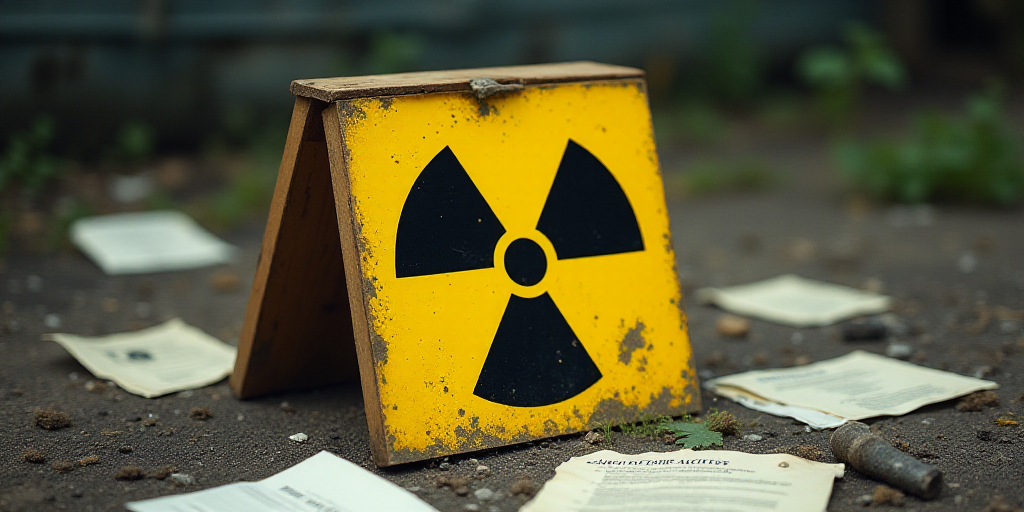Iran’s Uranium Enrichment and Israel’s Concerns
In recent years, Iran has significantly increased its production of highly enriched uranium, nearing a quality similar to that used in nuclear bombs. On June 13, Israel launched an unprecedented attack against Iran, claiming the purpose was to prevent Tehran from acquiring nuclear weapons. Iranian authorities deny these accusations.
Designing a Nuclear Weapon: The Complex Process
Having the raw material is only the first step; creating a nuclear weapon requires multiple complex stages.
Enrichment
There are two methods: using enriched uranium or plutonium, which is produced by burning uranium.
Although uranium is relatively common, over 85% of its production comes from six countries: Kazakhstan, Canada, Australia, Namibia, Nigeria, and Russia, according to the World Nuclear Association.
In its natural state, uranium consists of uranium-238 (99.3%) and uranium-235 (0.7%). Only the latter, called “fissile,” can be used as nuclear fuel.
The process begins by grinding the rock and extracting uranium using acidic solutions. After drying, a solid concentrate called “yellow cake” or “ammonium diuranate” is obtained. When heated slightly, it turns into a gas and can be enriched.
The operation involves separating the heavier uranium-238 from the lighter uranium-235, usually through centrifuges.
Thousands of these expensive and large machines are needed for significant volumes, and only a few countries in the world possess them. According to the U.S. Institute for Science and International Security (ISIS), Iran has nearly 22,000 centrifuges, though the 2015 Joint Comprehensive Plan of Action (JCPOA) with international powers limited their number to around 6,000.
Enriched at low levels (3% to 5%), uranium is used in civilian nuclear power plants for electricity production. At 20%, it’s used to produce medical isotopes, aiding in cancer diagnosis.
However, at very high levels (90%), it’s called “weapon-grade uranium,” which can be used to manufacture the bomb A, known as an atomic or nuclear bomb.
Fisión
Sufficient “critical mass” is required to initiate a chain reaction causing the explosion.
According to the International Atomic Energy Agency (IAEA), approximately 42 kg of enriched uranium is needed. In theory, Iran has enough reserves to produce more than nine bombs.
In practice, projecting a block of uranium-235 towards another using an explosive charge is necessary. Atoms break in the impact, releasing maximum energy—intense heat, an explosion effect, and a radiation rainfall. This is the principle of nuclear fission.
However, mastering the final stages takes many months. For a missile-launched bomb, the technological challenge is double: ballistic and miniaturization.
Balancing the range and precision of the artifact is necessary, but the nuclear weapon must also be compact enough to fit on a warhead. Simultaneously, its robustness for firing must be ensured.
If all stages are accomplished, a missile can carry multiple nuclear warheads capable of targeting different objectives.
The bomb A was used in August 1945 when it was launched by U.S. planes over Hiroshima and Nagasaki in Japan, resulting in the deaths of approximately 214,000 people.
Key Questions and Answers
- What is uranium enrichment? It’s the process of increasing the concentration of uranium-235, the isotope capable of sustaining a nuclear chain reaction.
- Why is enriched uranium dangerous? Highly enriched uranium (90% or more) can be used to create a nuclear weapon.
- What is critical mass? The minimum amount of fissile material needed to sustain a nuclear chain reaction.
- What is the ballistic challenge in creating a nuclear weapon? Ensuring the missile can accurately deliver the warhead to its intended target.
- What is the miniaturization challenge? Making the nuclear weapon small enough to fit on a missile warhead while maintaining its robustness for firing.






